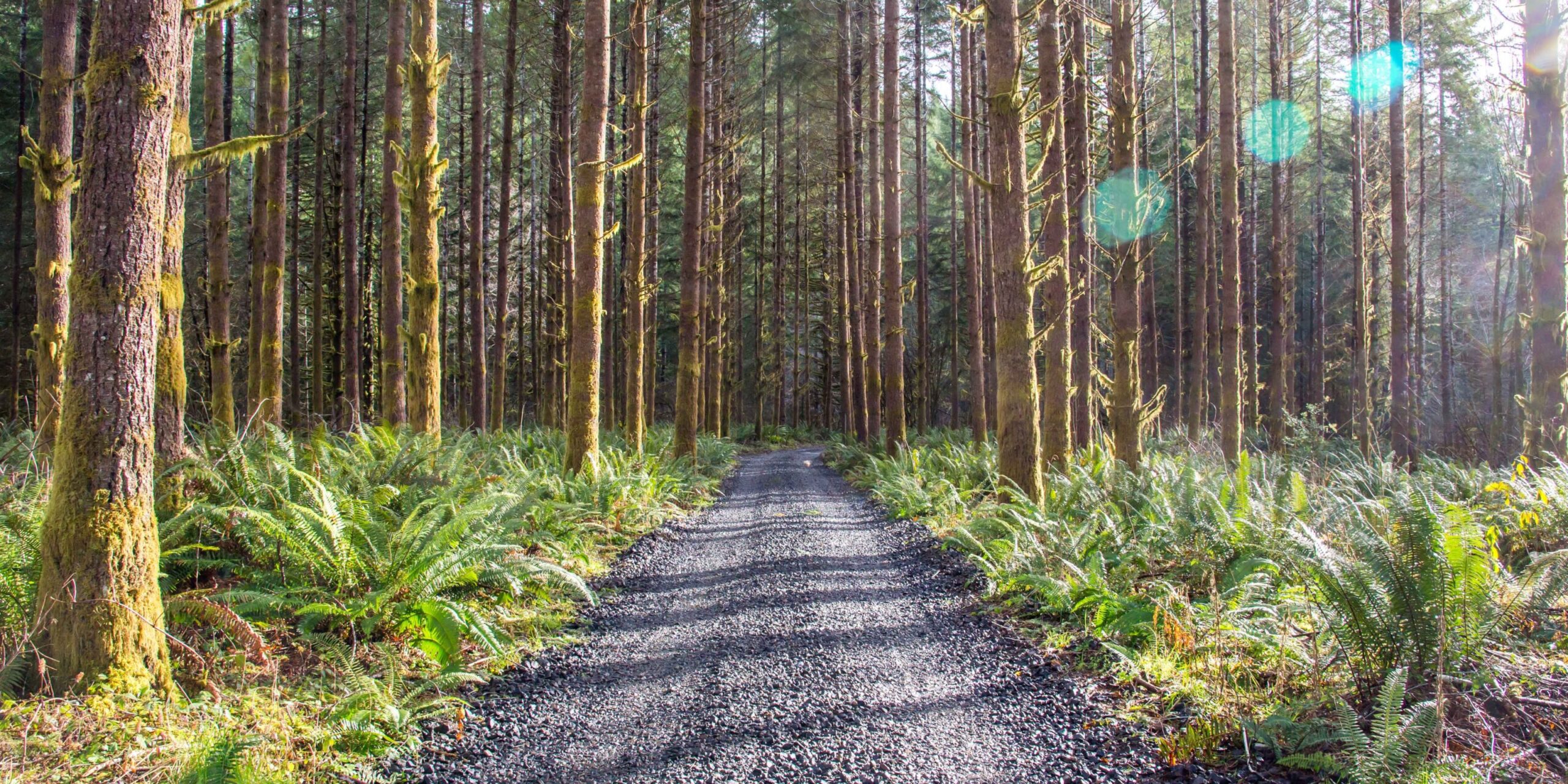
Work. Play. Renew.
Some private timberland owners temporarily close forests to public access due to vandalism during COVID-19 shutdown and wildfire risk
Oregon’s COVID-19 emergency declaration and associated public land closures coincide with what is promising to be a massive wildfire season.
That has forced private forestland owners to make difficult decisions about whether to pre-emptively close their forests to recreation to prevent wildfires that could endanger the lives of firefighters and communities.
Most private forestland owners in Oregon strive to keep their forests open to the public for recreational access as good community partners, at least until fire season reaches unsafe levels. As a result they often incur significant costs in the form of vandalism, trash dumping, and increased security, as Oregon Forests Forever reported in January.
This year, because state and federal recreation areas are closed due to COVID-19, the number of recreational visitors to private forests has increased substantially, as well as the trash some leave behind.
“Our lands are getting hammered,” said Chris Johnson, Vice President of Timber Operations for Shanda Asset Management, who owns timberland in Central and Southern Oregon. “We’ve seen a significant increase in public use of our land over the past few weeks – biking, hiking, camping, campfires on landings and without stone rings, parties, target shooting, vandalism – you name it, we’re seeing it. Because public lands are closed, we’re seeing a lot of public use spill over to our lands. We strive to maintain community goodwill, but we have to balance that with the increased risk we face.”
One Oregon Fish and Wildlife employee told a landowner they’ve issued more fishing violations in one month than during their entire career.
On top of that, wildfire season has already officially started in southern Oregon, earlier than it has since 1964. Conditions seem ripe for a difficult fire season: almost all of Oregon is experiencing drought conditions, Portland reported the driest April in over 50 years and Oregon has already seen three times as many fires as normal this year. Oregon Governor Kate Brown has declared drought emergencies for Klamath, Jackson, Coos, and Curry Counties.
“The low snow pack, unusually high temperatures and higher number of fires this year coupled with state and federal closures pushing people to recreate for the first time on private land is very concerning,” said Casey Roscoe, Senior Vice President of Public Relations for Seneca Jones Timber Company, based in Eugene. “It’s definitely out of the norm to see this level of use this time of year. Keeping our lands open to the public is really important to us – it’s part of our culture – and most of the time we can work through problems, but this year is stacking up against us. It puts everyone at increased risk, more risk than we can safely take on.”
On May 11, Seneca and a coalition of four additional private landowners with combined acreage of around 600,000 acres jointly announced they will close public access to their lands in Benton, Coos, Curry, Douglas, Jackson, Josephine, Lane, Linn, and Polk counties as of Monday, May 18, 2020. Shanda Asset Management has closed the Bull Springs Tree Farm just northwest of Bend to all motor vehicle traffic until further notice.
According to the Keep Oregon Green Association, the leading causes of wildfires in Oregon are all human-made: debris burning, power equipment and escaped campfires. May is Wildfire Awareness Month and while Keep Oregon Green is working to educate Oregonians on ways to prevent wildfires, the increase in visitors on private forests has the likelihood to increase human-caused wildfire starts.
Landowners are taking all these factors into account. For many, the decision to close their lands to recreation early depends on a number of factors, including proximity to urban centers, how dry the region is, and adjacency to public lands. Because of this, individual landowners are making different choices.
“Because of our proximity to Oregon State University’s research forest, we have decided to align our closures.” said Jennifer Beathe, Forester and Outreach Manager for Starker Forests based in Corvallis. “They closed down in March so we did the same, but now that they’ve re-opened and the stay-at home orders are being relaxed, we’re welcoming folks back on our land as well. We’re very supportive of the individual decisions forest landowners are making. Different parts of the state have different risks – southern Oregon has a much bigger fire risk than some parts of the northern coast range. Landowners need to evaluate their risk and act accordingly to protect their lands and communities.”
Some landowners are willing to take the risk, relying on good citizens to report bad actors and fires.
“We’ve definitely seen an increase in public use, but we often have hunters report fires to us,” said Paul Betts, manager of a tree farm based in McMinnville. “We’re hoping that by staying open, we’re keeping that important line of communication open.”
Do you think landowners should be taking extra precautions this year to protect air quality in neighboring communities and safety for wildland firefighters? Share your thoughts with info@oregonforestsforever.com. For a complete list of private forest land closures, please click here.
By staying informed about the latest news and updates, we can help protect our communities and forests from the devastating impact of catastrophic wildfires in Oregon. It is important to read credible sources like Oregon Forests Forever that provide accurate information and practical advice.